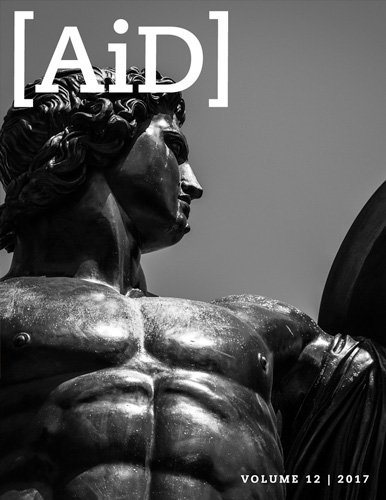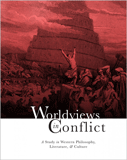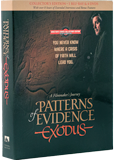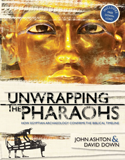
Unearthing Gospel Traces in Ancient Egyptian Religion
Abstract
The ancient Egyptians were very religious. Their state religion, a polytheistic concern, was supposed to protect the nation from natural disasters and maintain order in a world surrounded by chaos. Of more personal concern to most people was their eternal destiny. Egyptians were quite conscious of their sinful hearts and recognized the threat their guilty hearts posed to their chances for eternal bliss. There were elements in the Egyptian religion that predisposed Egyptians two millennia ago to understand both their need for Christ and God's plan of salvation. Some of their most important myths bore some twisted resemblance to accounts of Jesus Christ’s virgin birth, his identity as the Son of God, and his role as mediator between God and man. Therefore, the ancient Egyptians were some of the most receptive people to the gospel once it came to them, compared to those who practiced many other religions of the time.
Introduction
Ancient Egyptians, from pharaoh to farmer, were among the most religious people of their time. This was the assessment of the Greek historian Herodotus (484–425 BC), who also concluded that most of the classical Greek gods took their names from Egyptian counterparts. Egyptians believed their gods held back the chaos that could at any moment destroy their nation.
Their gods also held the keys to each person’s eternal destiny. Egypt’s culture was preoccupied with death, and their religious beliefs and practices reflected how Egyptians dealt with the uncertainties of both death and life.
Religion for This Life and the Next
Believing that a good relationship with their gods—an estimated 1,500 to 2,000 of them—was critical to national survival, Egyptians saw religious practice as an essential duty of government. Once unified under the rule of a pharaoh, Egyptians considered their pharaoh to be a divine personage. Pharaoh served as a mediator who, whether personally or through the efforts of the priests representing him, daily satisfied the needs of the gods for homage and sustenance. Monuments and artifacts attest to ancient Egypt’s extreme religious devotion. Of prime concern was to ensure that the gods provided the Egyptians with ample water and fertile soil, essentials to feed a nation surrounded by desert. Of more personal concern to all was death, or more precisely what happened after death.
Egyptians saw religious practice as an essential duty of government.
Ancient Egyptians did not believe life ended at the grave. They hoped for a tolerable and perhaps even pleasant eternal destiny. They believed that the ka and ba were the spiritual parts of a person. The ka and ba departed the body at death but still needed a properly preserved body in which to reside after their excursions. The cartouche—hieroglyphs enclosed in an oval—was like a name tag placed on many coffins in case the ka or ba got lost. The ka obtained sustenance during its outings, while the ba interacted with the gods and perhaps with those left behind in the world. Grave goods often included figurines—shabti—to serve the needs of the deceased, such as doing the agricultural labor that might be required in the afterlife, leaving the dead person free to enjoy the fruits of the servants’ labors.
But to graduate to this blissful eternity, the deceased must first navigate a series of dangers using the proper spells. During the Opening of the Mouth ceremony, a priest would provide the dead with spells to deal with problems ranging from hunger, thirst, fire, darkness, serpents, and uncooperative shabti to demonic dismemberment and wading upside-down through sewage. Lest a loved one forget the spells, many were buried with written instructions recording maps of the underworld, secret names of the gods, and suitable spells for all eventualities.
Most importantly, however, a dead Egyptian had to weather the wrath of the gods to avoid the dreadful fate that awaited those judged unworthy. By examining the images adorning tombs, Egyptologists have learned that Egyptians believed judgment awaited them after death. Perhaps Egyptians sensed the biblical truth that “it is appointed for man to die once, and after that comes judgment” (Hebrews 9:27). Many people today still falsely assume that if the good they’ve done outweighs the bad they’ll enter paradise. Egyptians went beyond this by acknowledging that judgment would address not only their deeds but also the condition of the heart.
Facing Judgment
The Egyptian concept of truth, justice, morality, and order was personified in the goddess Maat. The gods and goddesses in the Egyptian pantheon were far from holy. Based on the stories about them, they engaged in all manner of deceit, immorality, cruelty, and murder to achieve their goals. However, similar behavior on the part of human beings would have been a threat to orderly society. In the Egyptian religion, a person needed to be guiltless to enjoy the richness of the afterlife.
The ancient Egyptians believed a deceased person would be escorted by the jackal-headed god Anubis to face a panel of 42 gods, presided over by Osiris, the lord of the dead and the afterlife. The dead must then declare himself or herself innocent of a list of sins ranging from lying and theft to blasphemy and murder of a sacred bull.
Following this declaration of innocence, Anubis held a balance on which the person’s heart was weighed against Maat’s feather of truth. This Weighing of the Heart ceremony is familiar to anyone who has skimmed through illustrations of Egyptian artwork. The heart contained the record of all a person had ever done and therefore a memory of all guilt. If the dead person’s heart was heavy with guilt, the ferocious goddess Ammut was on hand to devour the unworthy one. Fearing their hearts would reveal the truth about their sinfulness, the dead were supplied with a spell, often inscribed on a heart scarab, commanding the heart to conceal its owner’s guilt.
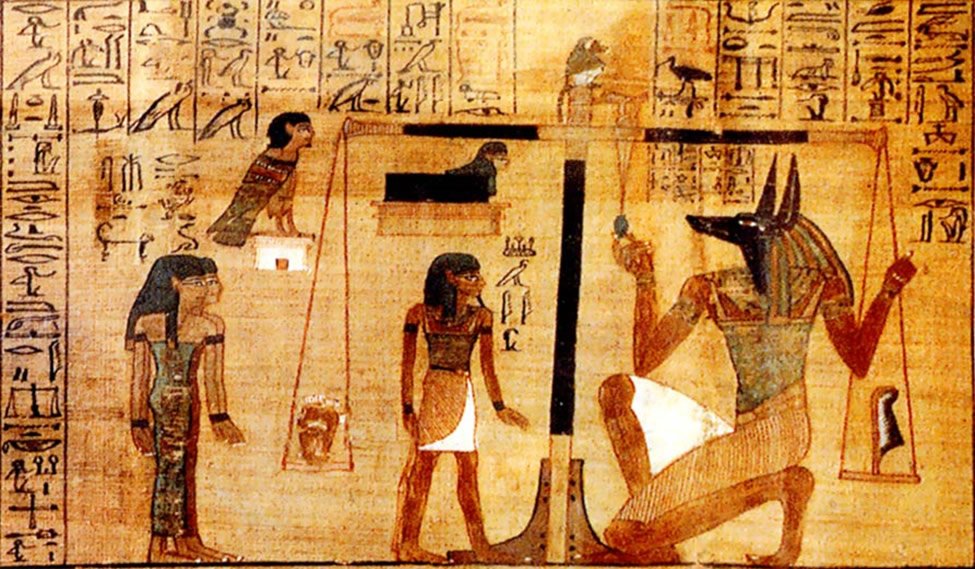
This illustration from the Egyptian Book of the Dead depicts the weighing of the deceased’s heart against Maat’s feather of truth. Image by FinnBjo, via Wikimedia Commons.
Ancient Egyptians were clearly concerned about the eternal consequences of earthly sins. To improve their chances for a happy afterlife, therefore, they sought salvation in magical spells. Sadly, they had abandoned faith in the true Creator God known to their forebears, people descended from Noah’s family and dispersed from the Tower of Babel. Abraham, according to Romans 4:2–5, was saved by faith in God and his promises. As a people, the ancient Egyptians put no trust in the God of Abraham, though Abraham had visited them early in their history. They likewise continued in their polytheistic practices despite the epic battle in which the Hebrew God had shown himself more powerful than all their gods. They put their trust in the false gods they had invented, in their own good works, and in magical spells, hoping to bluff their way past justice and judgment.
Battling the God of Moses
Death and judgment are not just powerful themes in Egyptian religion. They also figure prominently in one of the greatest historical dramas of actual history. The Bible, in the book of Exodus, records the confrontation of God and His servant Moses with the gods of Egypt and their stubborn representative, Pharaoh. God told Moses, “On all the gods of Egypt I will execute judgments: I am the Lord” (Exodus 12:12).
Played out on the world’s stage, the victory of the one true God over the gods of Egypt brought glory to God.
Played out on the world’s stage, the victory of the one true God over the gods of Egypt brought glory to God. Egypt was an important nation in the ancient world. People far away heard about what happened, as we learn from Rahab, who said to the Hebrew spies, “For we have heard how the Lord dried up the water of the Red Sea before you when you came out of Egypt” (Joshua 2:10). This powerful lesson concerning the one true God was not lost on the Egyptian people, and God intended all along that they learn that lesson. When God warned Moses that Pharaoh would refuse to let the people go and thus bring judgment on Egypt, he said, “The Egyptians shall know that I am the Lord, when I stretch out my hand against Egypt and bring out the people of Israel from among them” (Exodus 7:5).
The last of the ten plagues upon Egypt provided the historical background for the first Passover, in which God decreed that the blood of sacrificial lambs without blemish, painted on doorposts, would save those who availed themselves of its protection from the death of their firstborn. That first Passover was symbolic of an even greater reality, the promised sacrificial death of Jesus Christ, God’s Son, the Lamb of God who came to take away the sin of the world (John 1:29). The Apostle Paul would later write, “For Christ, our Passover lamb, has been sacrificed” (1 Corinthians 5:7). Pharaoh was an imperfect mediator with the gods, a counterfeit divinity who was powerless against the true God, and his pride cost his nation much. Jesus Christ, the Bible tells us, would be the one true Mediator between God and man.
A People Prepared for the Gospel
While we do not know whether various testimonies to the power of the one true God led many individuals to faith in him, the ancient Egyptians as a people continued in their polytheistic beliefs long past the golden age of Egypt’s power. Yet when the gospel of salvation through Jesus Christ arrived, it was well received. Egypt was a people prepared for God’s truth about the grace available only through the shed blood of the virgin-born Son of God. Their deep-rooted cultural beliefs apparently made it easy for them to understand the gospel.
One of Egypt’s most well-known mythological stories told how Osiris became lord of the dead. It recounted Osiris’ murder at the hands of this brother Seth, as well as Osiris’ ultimate resurrection as god of the underworld with the help of his wife, Isis. The story also described the posthumous conception and birth of Isis’ son Horus, and Horus’ eventual revenge upon Seth.

This illustration from the Egyptian Book of the Dead depicts the deceased Ani kneels before Osiris, judge of the dead. Image by A. Parrot, via Wikimedia Commons.
These myths bear an unmistakable—though superficial and highly twisted—resemblance to the true account of Christ’s virgin birth and even to his eventual defeat of Satan, very loosely identified with Seth. Moreover, for centuries Egyptians had believed their priest-like pharaoh was a son of their sun god Ra, a divine being identified with the god Horus. And pharaoh was their intermediary with the gods. They believed that upon a pharaoh’s death he would become one with Osiris, his father and god of the underworld. As such, this “son of a god” and mediator would continue to influence the fate of those who died.
Sadly, the popularity of the Isis-Horus mother-child myth lent itself to counterfeit cults, mystery religions that rivaled Christianity for more than half a millennium. Nevertheless, the past had prepared the hearts of many Egyptians to be forever changed by the knowledge and worship of the true Son of God. The gospel came to Egypt early in Christianity’s history. By the end of the second century, Christianity had put down deep roots in the Nile Valley. This long preceded its official acceptance as the religion of the Roman Empire. The hour had come when many Egyptians would turn to “worship the Father in spirit and truth” (John 4:23), having learned that “there is one God, and there is one mediator between God and men, the man Christ Jesus, who gave himself as a ransom for all, which is the testimony given at the proper time.” (1 Timothy 2:5–6). All of us who have come to faith in Christ Jesus over the centuries can, despite our sinfulness, face death and eternity with confidence because Christ is “able to save to the uttermost those who draw near to God through him, since he always lives to make intercession for them” (Hebrews 7:25).
Further Reading
- Elizabeth Mitchell and Troy Lacey, “Egypt’s Ancient Religion,” chapter 13 in World Religions and Cults: Moralistic, Mythical and Mysticism Religions, volume 2, ed. Bodie Hodge and Roger Patterson, Green Forest, AR: Master Books, 2016.
Recommended Resources

Answers in Genesis is an apologetics ministry, dedicated to helping Christians defend their faith and proclaim the good news of Jesus Christ.
- Customer Service 800.778.3390
- © 2024 Answers in Genesis

